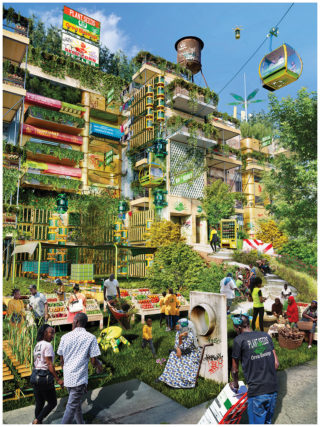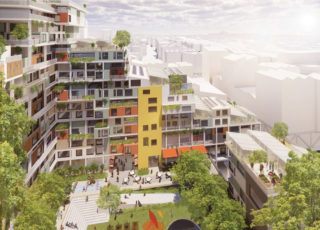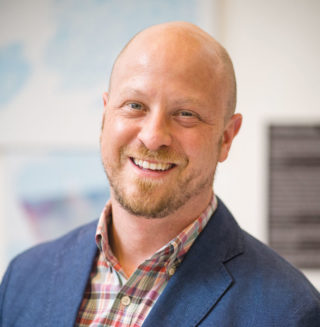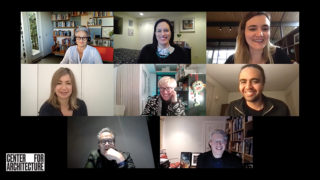
As we were heading to press with our 2021 Design Awards issue, the Pritzker Prize announced the recipients of its annual accolade. This year’s winners, Anne Lacaton and Jean-Philippe Vassal of France, are not well known internationally, but their work offers a thrilling, if low-key, new approach to architecture.
Committed to never demolishing what already exists, the duo instead intervenes in subtle ways to gently transform a building or site conditions to better serve the users and the environment. The resulting up-grade is more sustainable, but it also remains familiar, a value too often overlooked by architects. It’s a literal interpretation of the word renovation—a renewal that allows the community to still recognize itself in the project. As practiced by Lacaton and Vassal, architecture looks forward as well as backward, taking into account a building’s place in the community and the existing network of relationships spun around a build-ing by the people who use it, a less tangible but no less critical form of infrastructure.
These values closely align with those of our 2021 Design Awards jury, who, as you will see in the pages that follow, prioritized the contribution that a design can make to its local community. Our Best in Competition winner, the Newark Housing Authority’s Training Recreation Education Center designed by ikon.5 architects, embodies this mandate. Contributing writer Fred Bernstein sketches a vivid portrait of a project that is both humble and inspired, one which our design awards juror Marlon Blackwell, FAIA, praised for how it creatively “exemplifies the idea of an economy of means.”
Beyond celebrating how much can be done with comparatively little, this year’s jury made other bold statements, including retiring the Sustainability category from the design awards program, arguing that today a sustainable approach should be a key tenet of every award-winning design. Advising on criteria for years to come, the jury proposed that sustainability should stretch beyond the idea of ecology to include social systems. “How are we learning from the project and how does it con-tribute?” is a question juror Stephen Gray, Assoc. AIA, would like to ask of all submissions.
The past year has given everyone in the architecture community cause to reflect on the social systems intimately linked with architecture, or at least to better appreciate how people interact with space on a daily basis, including the myriad small rituals that connect each of us to our built environment. Many of these interactions happen subconsciously as part of a routine, but when this routine is disrupted, we can feel utterly disoriented. We understand in a personal, visceral way how moving through space shapes our day and allows us to mark the passage of time.
As we regroup and move ahead, holding onto the observations and revelations of the past year can help us engage in meaningful ways with issues of accessibility and equity. Asking “What have we learned?” and “How should we be learning?” will be the driving questions for our upcoming Summer issue dedicated to design education. In this, our first fully digital issue, we’ll ask students and educators to reflect on critical issues in design education and new best practices that may be informed by virtual or hybrid learning during the pandemic.
And, speaking of academe and awards, congratulations to the architects elected to the American Academy of Arts and Letters this year. They include James Corner, Kathryn Gustafson, Nader Tehrani, and a trifecta of recent AIANY Design Awards jurors: Meejin Yoon and Walter Hood (both 2018 jury members), and Marlon Blackwell (2021 jury). Cheers to all the honorees!















